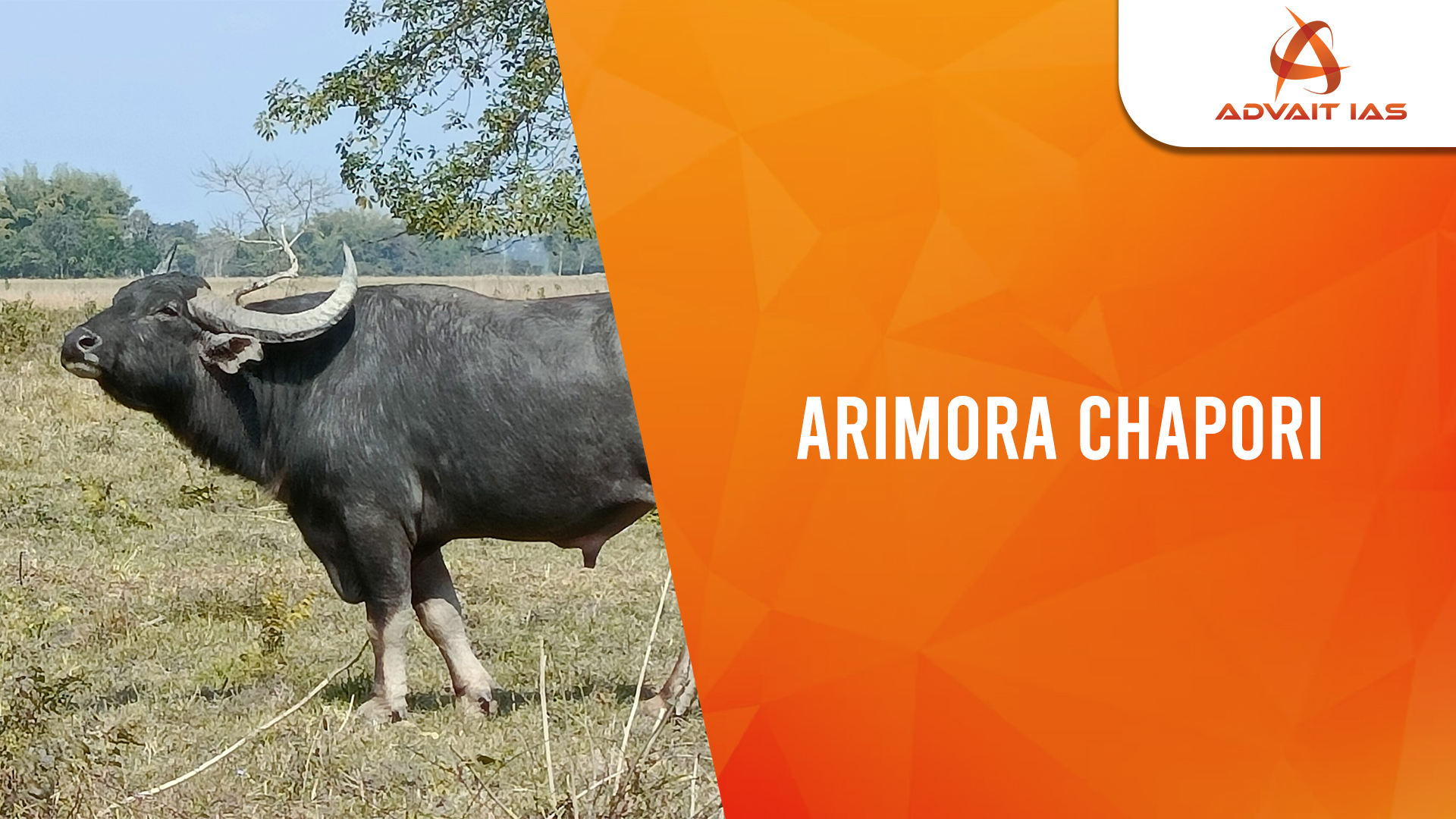Human-wildlife conflict is a pressing environmental issue in India, especially in states like Assam, where elephant migration routes intersect with human settlements. Hati-Bandhu, a conservation group, has been working tirelessly to mitigate this conflict, particularly in the Arimora Chapori region near Orang National Park and Laokhowa Burha Chapori Wildlife Sanctuary.
Hati-Bandhu Initiative
- A nature and wildlife organization working to mitigate human-wild elephant conflicts.
- Advocates for preserving Arimora Chapori as a safe passage for wildlife.
1. Arimora Chapori: Ecological and Economic Significance
Ecological Importance
- Acts as a crucial wildlife corridor for species like:
- Asian Elephants (Elephas maximus)
- Royal Bengal Tigers (Panthera tigris tigris)
- Wild Buffaloes, Wild Pigs, and Deer
- Migratory Birds
- Supports biodiversity by connecting Sonai Rupai and Nameri National Parks.
- Essential for maintaining seasonal migration routes of elephants.
Economic Importance
- Agriculture & Dairy Farming:
- Provides livelihood to farmers from villages like Parbatia, Beseria, and Bihaguri.
- Supports seasonal crop cultivation and dairy farming, allowing coexistence with wildlife.
- Water Resource Management:
- Acts as a natural buffer zone preventing soil erosion and maintaining wetland ecosystems.
2. Human-Wild Elephant Conflict in the Region
Seasonal Migration & Crop Damage
- Elephants migrate through tea gardens, villages, and farmlands during harvest season.
- Conflicts arise due to:
- Crop destruction, property damage.
- Fear-driven human intervention, leading to elephant injuries or fatalities.
- Blockage of natural corridors due to developmental projects.
Role of Arimora Chapori in Conflict Mitigation
- Hati-Bandhu volunteers help direct elephant herds towards the chapori, preventing large-scale damage.
- Ensures adequate food and shelter for migrating herds.
- Elephant corridors like Depota and Bihaguri provide crucial connectivity but face encroachments.
3. The Nameri-Sonai Rupai-Arimora Chapori Corridor: A Conservation Initiative Under Threat
Importance of the Corridor
- Proposed over a decade ago as a safe migration path for elephants.
- Helps reduce conflict by offering elephants an uninterrupted route.
- Facilitates long-distance seasonal migration while protecting human settlements.
Threats to the Corridor
- Encroachment & Deforestation:
- Illegal land occupation, including suspected Bangladeshi migrants, is reducing forest cover.
- Developmental Projects:
- Infrastructure projects obstruct the natural movement of elephants.
- Poaching & Illegal Activities:
- Reports of poachers targeting wild species in the area.
- Disturbances from Wild Buffaloes:
- A wild buffalo has been attacking domestic cattle in the region, affecting farmers.
Conservation Efforts & The Way Forward
Role of Hati-Bandhu & Local Conservationists
- Conducts awareness programs for villagers to prevent retaliatory killings of elephants.
- Works with the forest department to secure safe passage for elephants.
- Advocates for strict protection of Arimora Chapori as a wildlife zone.
Policy Recommendations
- Government Action:
- Strengthen laws to protect elephant corridors.
- Implement community-led conservation models with incentives.
- Forest Department Measures:
- Increase patrolling to curb illegal encroachments and poaching.
- Relocate problematic wild buffaloes to a safer habitat.
- Sustainable Development:
- Ensure eco-friendly infrastructure projects that do not obstruct migration routes.
- Implement compensation schemes for farmers affected by elephant raids.
The Arimora Chapori region plays a pivotal role in Assam’s human-wildlife coexistence. Despite conservation efforts by organizations like Hati-Bandhu, increasing encroachments and developmental activities threaten the ecological balance. A collaborative approach involving local communities, government bodies, and wildlife activists is necessary to ensure the protection of elephant corridors while supporting sustainable livelihoods.






